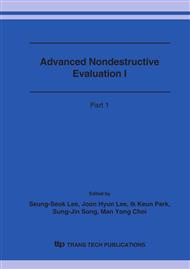p.1145
p.1151
p.1157
p.1163
p.1168
p.1172
p.1177
p.1182
p.1186
Detection of Listeria Monocytogenes Using an Automated Fiber-Optic Biosensor: RAPTOR
Abstract:
Fiber-optic biosensor uses light transmittable tapered fiber to send excitation laser light and receive emitted fluorescent light. The fluorescent light excited by an evanescent wave generated by the laser is quantitatively related to biomolecules immobilized on the fiber surface [1]. An automated fiber-optic biosensor based detection method for Listeria monocytogenes was developed in this research. Detections of Listeria monocytogenes in hotdog sample were performed to evaluate the method. By using the detection method with automated fiber-optic biosensor, 5.4×107 cfu/ml of Listeria monocytogenes was able to detect.
Info:
Periodical:
Pages:
1168-1171
Citation:
Online since:
October 2006
Keywords:
Price:
Сopyright:
© 2006 Trans Tech Publications Ltd. All Rights Reserved
Share:
Citation:


